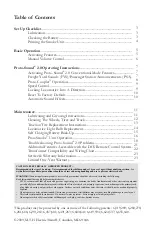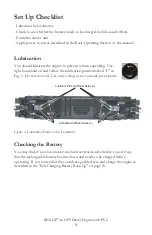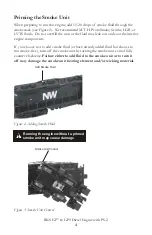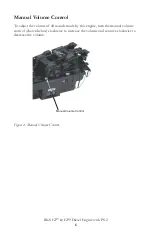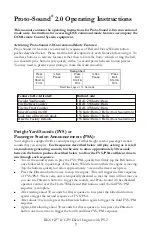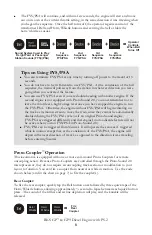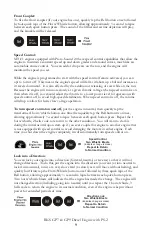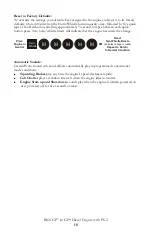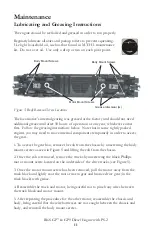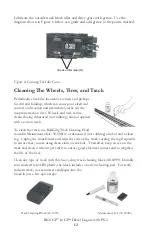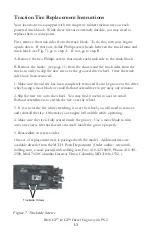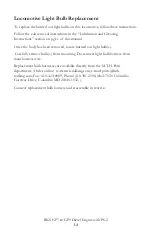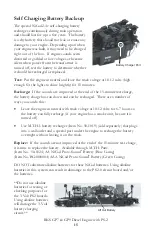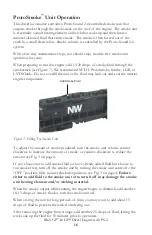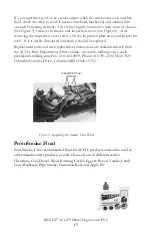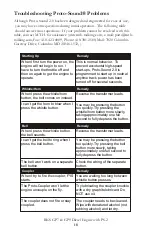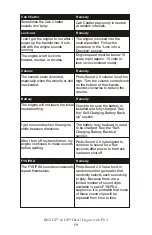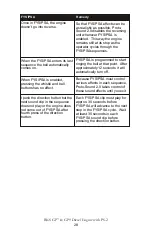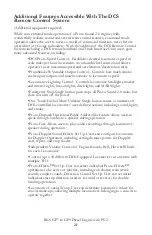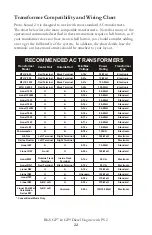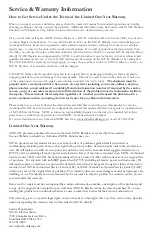
™
ProtoSmoke Unit Operation
This diesel locomotive contains a Proto-Sound 2.0 controlled smoke unit that
outputs smoke through the smokestack on the roof of the engine. The smoke unit
is essentially a small heating element and wick that soaks up and then heats a
mineral oil-based fluid that emits smoke. The smoke is then forced out of the
stack by a small electric fan. Smoke volume is controlled by the Proto-Sound 2.0
system.
With a few easy maintenance steps, you should enjoy trouble-free smoke unit
operation for years.
When preparing to run this engine, add 15-20 drops of smoke fluid through the
smokestack (see Figure 7). We recommend M.T.H. ProtoSmoke, Seuthe, LGB, or
LVTS fluids. Do not overfill the unit or the fluid may leak out and coat the interior
engine components.
To adjust the amount of smoke produced, turn the smoke unit volume control
clockwise to increase the amount of smoke, or counter-clockwise to reduce the
amount see Fig. 3 on page 4.
If you choose not to add smoke fluid (or have already added fluid but choose to
run smoke-free), turn off the smoke unit by turning the smoke unit control to the
“OFF” position, fully counter clockwise position, see Fig. 3 on page 4.
Failure
either to add fluid to the smoke unit or to turn it off may damage the smoke
unit heating element and/or wicking material.
When the smoke output while running the engine begins to diminish, add another
10-15 drops of smoke fluid or turn the smoke unit off.
When storing the unit for long periods of time, you may want to add about 15
drops of fluid to prevent the wick from drying out.
After removing the engine from storage, add another 25 drops of fluid, letting the
wick soak up the fluid for 15 minutes prior to operation.
RKS GP7 & GP9 Diesel Engine with PS-2
16
Add Smoke Fluid
Figure 7. Filling The Smoke Unit

